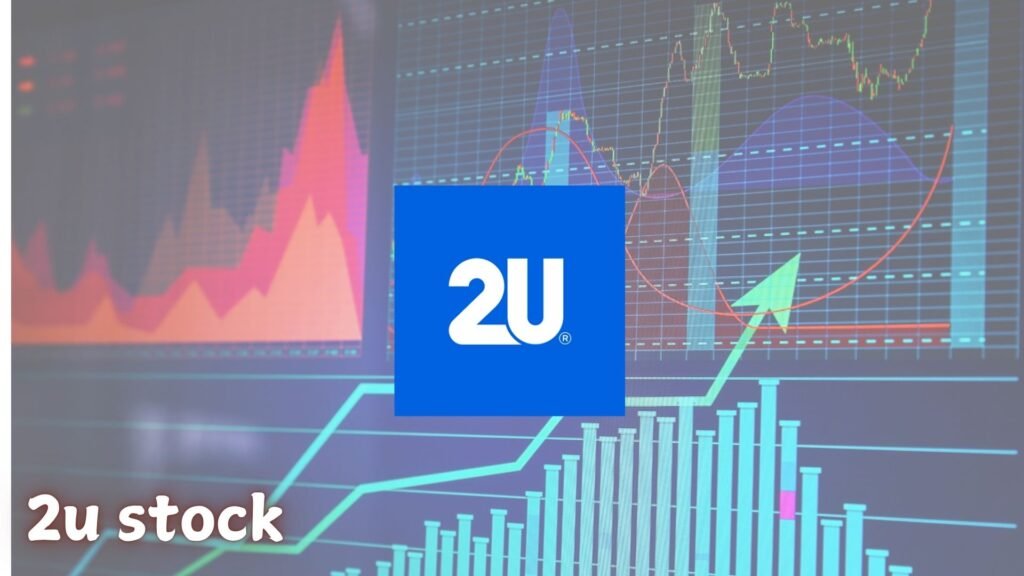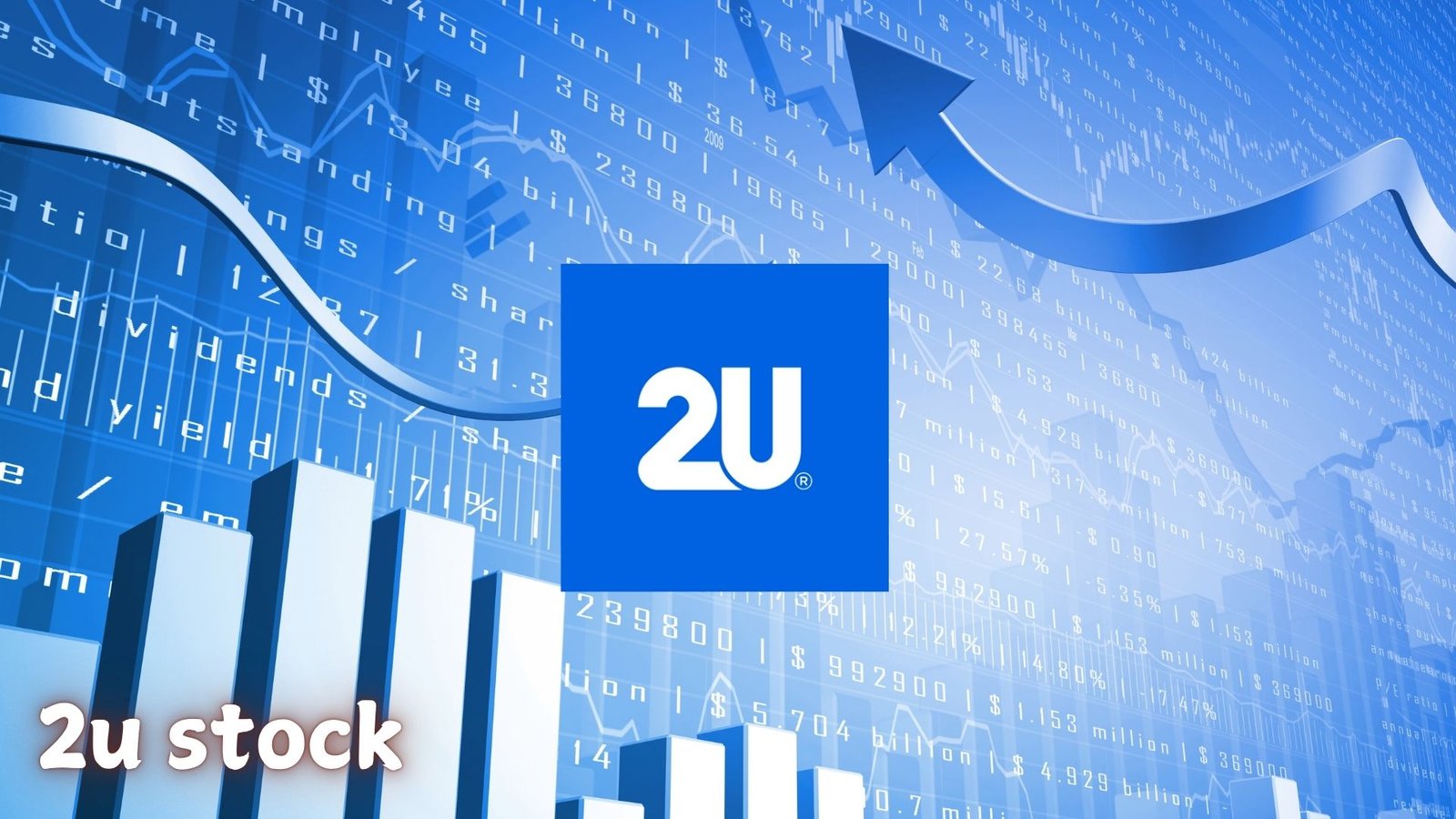2U Inc. is a company that has made a name for itself in the online education industry. It partners with universities to offer digital learning programs, allowing students to earn degrees, complete short courses, and participate in boot camps from prestigious institutions. Over the years, the company has seen both success and setbacks, with its stock performance reflecting these challenges.
The stock, once trading under the symbol TWOU on NASDAQ, has been delisted and now trades over-the-counter under TWOUQ. Investors are watching closely, wondering whether 2U can turn things around. This article will provide a detailed analysis of the company’s background, stock performance, financial situation, risks, and future outlook to help you understand where it stands today.
Understanding 2U Inc.
Founded in 2008, 2U aimed to revolutionize higher education by making top university programs accessible online. The company works with leading institutions such as Harvard, Yale, and MIT to bring courses to students worldwide. By providing digital tools and marketing support, 2U helps universities expand their reach beyond physical classrooms.
While online education has grown in popularity, competition in the space has also intensified. Many platforms now offer similar courses at different price points, creating a challenge for 2U. Despite these hurdles, the company continues to focus on expanding its course offerings and strengthening its partnerships with universities.
2U Stock Performance Over the Years
2U’s stock price has gone through significant ups and downs. Initially, the company attracted investors because of its growth potential. The rise of online education, especially during the COVID-19 pandemic, brought a surge in demand for digital learning solutions. During that period, many investors saw 2U as a strong player in the edtech sector.
However, the company struggled with financial challenges, including rising costs and increasing competition. As expenses continued to outweigh revenue, investor confidence declined. Eventually, the stock was delisted from NASDAQ and moved to over-the-counter markets under the symbol TWOUQ.
The delisting was a major blow, as it reduced the stock’s visibility and made it less attractive to institutional investors. Many funds and large investors avoid OTC stocks because they are considered riskier than those listed on major exchanges. This move significantly impacted the trading volume and market perception of 2U stock.
Financial Challenges and Debt Concerns
One of the biggest concerns for 2U has been its financial health. While the company generates revenue from partnerships with universities, its operating expenses have remained high. The cost of acquiring students, marketing programs, and maintaining its technology platform has weighed heavily on profitability.
Revenue has grown steadily, reaching over $900 million in 2023, but the company has consistently reported net losses. High operational costs and debt obligations have made it difficult for 2U to turn a profit. The company has borrowed heavily to fund its expansion, but without strong earnings, paying off this debt has become a challenge.
As of the latest reports, 2U’s total debt is over $1 billion. A high debt-to-equity ratio suggests that the company is relying heavily on borrowed money, which increases financial risk. With limited cash reserves, 2U needs a clear plan to improve its balance sheet.
If the company fails to restructure its debt or boost profitability, it may struggle to regain investor trust. Many struggling companies in the past have resorted to cost-cutting measures or restructuring plans to improve financial stability. Whether 2U can do the same remains uncertain.
The Growing Competition in Online Education
The online education sector is highly competitive, with several well-established companies fighting for market share. Platforms like Coursera, Udemy, and edX offer similar courses, often at lower prices or with different learning models. Some competitors provide free courses with optional paid certificates, making them appealing alternatives.
Unlike its competitors, 2U partners directly with universities to offer full-degree programs and professional certificates. While this model has its advantages, it also comes with higher costs. Universities require marketing support, technology integration, and student services, all of which add to 2U’s expenses.
The challenge for 2U is to differentiate itself in a crowded market. While brand partnerships with top universities give the company credibility, it must find ways to make its programs more cost-effective and appealing to students. Without competitive pricing and innovative learning features, it may struggle to compete with platforms that offer flexible, lower-cost alternatives.
Growth Opportunities for 2U
Despite its challenges, 2U still has opportunities to recover and grow. Online education continues to expand, with more universities seeking digital solutions to reach global students. If 2U can improve its business model and financial position, it has a chance to regain investor confidence.
One potential area of growth is cost-cutting and operational efficiency. If 2U can find ways to reduce its spending without compromising the quality of its programs, it may improve its profitability. Companies in financial trouble often reassess their strategies, cutting unnecessary expenses while focusing on their strongest areas.
Another opportunity lies in expanding its partnerships. While 2U already collaborates with top universities, it can look for new institutions and industries to work with. More partnerships could lead to increased enrollment and revenue.
Additionally, technological improvements could help 2U stay competitive. The education industry is evolving, with new advancements such as artificial intelligence and personalized learning platforms. If 2U can integrate these innovations, it may attract more students and universities to its platform.
Risks to Consider Before Investing in 2U Stock

Investing in 2U stock carries risks, particularly given its financial struggles and recent delisting. Before making any investment decision, it’s important to consider the following factors:
- Financial Instability – The company has reported continuous losses and has a high level of debt. Unless it finds a way to improve its financial standing, the risk of further decline remains high.
- Market Perception – Delisting from NASDAQ means that fewer institutional investors will consider the stock. Many investors avoid OTC stocks due to concerns about transparency and liquidity.
- Competitive Pressure – With so many online education providers in the market, 2U must differentiate itself to survive. If it fails to innovate or lower costs, competitors may continue to take market share.
- Regulatory Challenges – The education sector is subject to regulations that could impact how 2U operates. Changes in university policies, government funding, or accreditation requirements could affect its business.
- Stock Volatility – Since moving to OTC markets, 2U’s stock has been more volatile. Prices can fluctuate significantly based on news, earnings reports, or changes in investor sentiment.
Also Read: REAX
Future Outlook for 2U
The future of 2U depends on its ability to address financial concerns, compete effectively, and restore investor confidence. If the company can restructure its debt, improve profitability, and expand its services, it may have a chance to recover.
One potential turning point could be a successful turnaround strategy that involves cost-cutting, improving operational efficiency, and strengthening its university partnerships. If 2U can demonstrate strong financial management and return to profitability, it could eventually apply for relisting on a major stock exchange.
However, this is not guaranteed. The company faces many hurdles, and investors should closely monitor financial reports and strategic moves. Anyone considering an investment should assess their risk tolerance and stay informed about industry trends.
Conclusion
2U Inc. has played a key role in the online education sector, but financial struggles have made its future uncertain. While the company continues to generate revenue, its high debt and rising costs have created significant challenges. The stock’s delisting from NASDAQ has further impacted investor sentiment, making it a high-risk investment.
At the same time, 2U has opportunities for recovery. The online education market continues to grow, and if the company can adjust its strategies to improve efficiency and competitiveness, it may regain its position. Investors should weigh the risks and rewards carefully before making any decisions about 2U stock.
FAQs
Q: What happened to 2U stock on NASDAQ?
A: 2U stock (TWOU) was delisted from NASDAQ due to financial instability and now trades as TWOUQ in the over-the-counter (OTC) market.
Q: Is 2U stock a good investment?
A: 2U stock carries high risk due to its financial struggles and delisting. Investors should carefully analyze its debt, revenue, and future growth plans before investing.
Q: Why did 2U face financial difficulties?
A: The company struggled with high operating costs, increasing debt, and strong competition in the online education sector, leading to consistent net losses.
Q: Can 2U stock be relisted on NASDAQ?
A: If 2U improves its financial position and meets NASDAQ’s listing requirements, it may apply for relisting, but there is no guarantee.
Q: How does 2U generate revenue?
A: 2U earns money through partnerships with universities, offering online degree programs, boot camps, and short courses.
Q: What are the biggest risks of investing in 2U stock?
A: The main risks include high debt, continued losses, competition from other online education platforms, and limited investor confidence due to its OTC status.
Q: Does 2U have growth potential?
A: Yes, if the company cuts costs, expands partnerships, and integrates new technologies, it could recover and grow in the online education market.
Stay Updated With GyattMeaning For More Blogs
